Cultural Similarities and Differences in Good Bye, Lenin!
Good Bye, Lenin can be viewed or rented here.
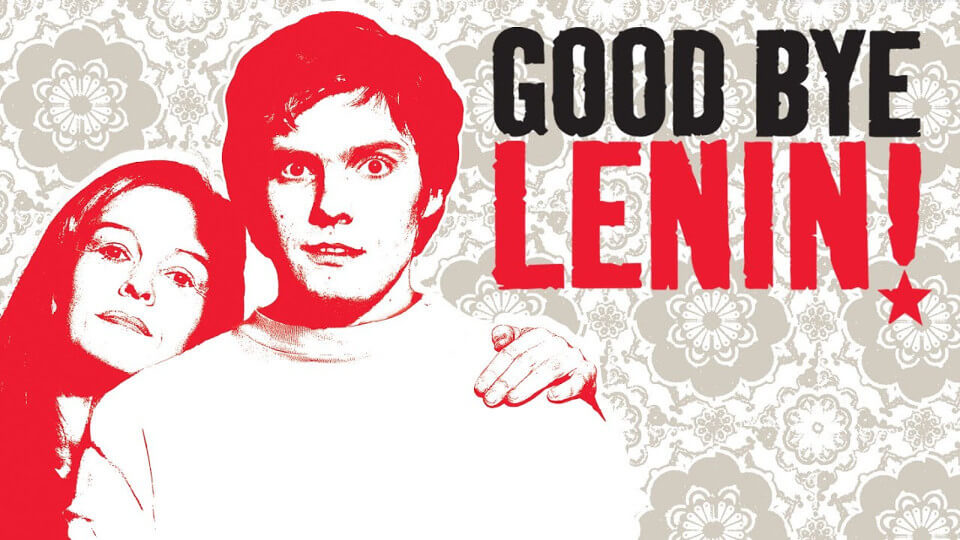
Good Bye, Lenin! is a 2003 German film that follows a family’s struggle in East Germany during the fall of the Berlin Wall. The mother, extremely dedicated to the socialist party, is in a coma as the wall collapses. Doctors tell the family that the shock of the wall collapse could very well kill their mother, so they take every action to conceal the collapse of the wall and communism.
Similarities:
- The cultural structure of family in Germany is similar if not almost identical to that in America. Roger Ebert makes an excellent point in his blog here. He states “How many of us lie to our parents, pretending a world still exists that they believe in but we have long since moved away from? And are those lies based on love or cowardice? Sometimes, despite a doctor’s warnings, parents have to take their chances with the truth.”
Differences:
- The families in East Germany must change their entire lives to fit in the West during the reunification of Germany. there’s a huge shift in political ideology, landmarks, jobs, clothing, and furniture. This is an experience I never had to endure due to laws, social culture, already inherent capitalist society, and the democracy of America.
Cultural, Social, Political Influences:
- The falling of Socialist ideology and lifestyle are overtaken by West Germany’s Capitalist society.
- Alex creates an almost parallel universe for his mother, having the culture, lifestyle, and world he once knew live on in his mother’s hospital room (and bedroom), whilst trying to fit in to the western culture out in the world.
Subtitulos en Inglés
Being a Spanish major, this assignment stuck out to me. When learning a new language, watching cartoons or other television programs is known to be helpful. All though out my Spanish classes, my teachers would mention the importance of watching Spanish-speaking television programs with subtitles in English, they specifically recommend telenovelas (soap-operas). So, naturally for this assignment, I chose a telenovela called Sangre de mi Tierra. The show takes place in the United States, but the family is originally from Michoacán, Mexico- so cultural differences can still be seen.
Above is the episode of Sangre de mi Tierra that I watched.
Some of the cultural differences reveled in this episode were:
- Greetings: In Hispanic culture and in Sangre de mi Tierra, when one person greets another, it is more intimate than what is typically seen in the American culture. The greetings include cheek kisses and a genuine concern for how the other person is feeling.
- Prayer: In the beginning of the episode a prayer was spoken. The prayer was very joyful, loud, and celebratory towards the Lord. In the American culture, prayers are usually kept more quiet and have less expression.
- Family/Sense of Togetherness: It is known that within Hispanic culture, the concept of immediate and extended family is different. Within the American culture, immediate family is usually one’s parents and siblings, yet in Hispanic culture what the American culture considers extended, the Hispanic culture will treat as immediate. There is a strong sense of togetherness within the family in Sangre de mi Tierra.
- Language: Language is a large part of culture and a more obvious cultural difference. The episode was in Spanish and the leading language in America is English.
Diane Hoffman
Subtitles
“Extr@” (German) with English subtitles!
I watched a German show called “Extr@”! I viewed the first episode which you can find here!

The episode consisted of four characters which were Sascha, Anna, Nic, and Sam. Sascha and Anna are roommates and Nic is their neighbor. Sam is Sascha’s American pen pal from seven years ago. He comes to visit her in Germany after he writes her a letter. What I noticed about the characters is that they fantasize over American men and women. Sascha and Anna give American men the stereotype that they all look like Brad Pitt! The characters hang out in Sascha and Anna’s apartment in the city, which is similar to what young Americans do with their friends too.
What I found similar to my culture in the show is that the girls dressed the same as girls my age do in America and they also have fun and crack jokes with one another. To me, the only thing I found different in the show was the food they ate and their language. They ate curryworst in the show which was assumed to be a popular food in Germany. They traveled by walking, biking, or taking a bus in the city. The weather in the show was sunny and they go to the Love Day Parade for fun! I can tell that the characters valued friendship the most through the whole episode.
Overall, I found the German culture to be quite similar to American culture in the show. However, there was no mention of politics or economic issues which is almost always brought up in American shows. The physical surroundings in the show reminded me a lot of New York City because of the buildings and I did not see anyone travelling by car.
I hope that this post will encourage you to view more foreign shows with English subtitles! Thanks for viewing! 🙂
Co roku
By: Dara Sborea
For this week’s blog, I watched a Polish short comedy. I decided to specifically look for something from Poland because my best friend, Hanna, is from Poland. She came to the US when she was eleven years old. Over the twenty-three years that Hanna and I have been friends, we have often discussed our cultural differences and the different ways we view and experience the world. I was curious to see whether watching something from Poland would be familiar to me because of my relationship with my best friend, or if it would be different. I found it to be both.
Co roku, which means every year, is a story about a brother and sister who have a yearly visit with each other. The short stars Kaja Bien as sister Wiktoria and Miroslaw Kupiec as brother Jedrek.
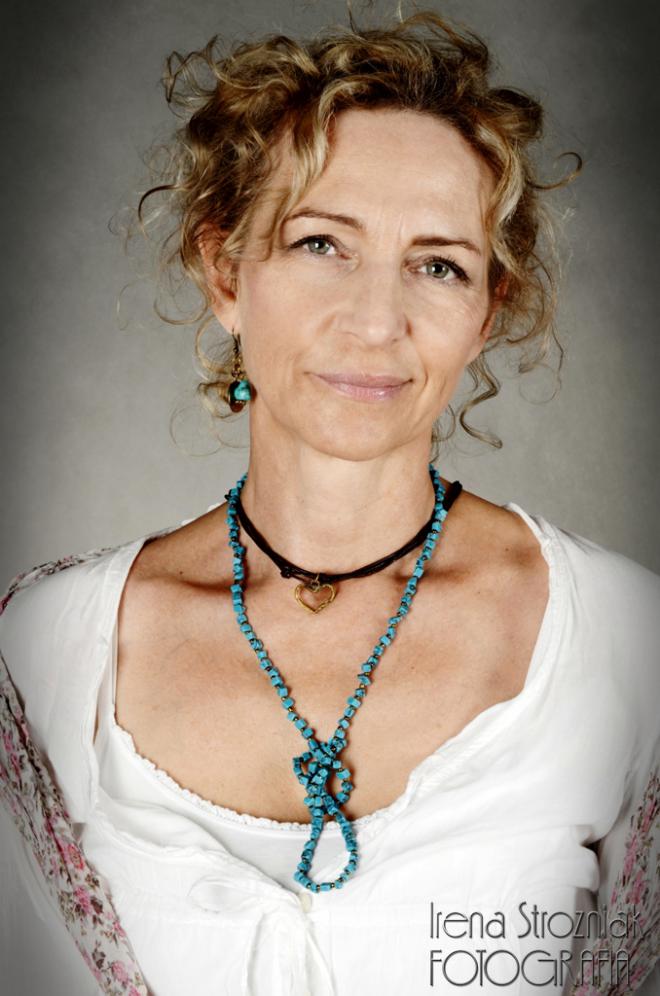

This short, like many other European films I have seen, centers on the characters. The interaction between brother and sister fills almost the entire film. In fact, there is only two other brief encounters in the thirty minutes of this short film, once with a painter who visits the sister, Wictoria’s apartment, and once with police officers in a park, where we don’t even hear them speak.
In the film, Wiktoria lives in a high-rise apartment. This is different from my own experience in the US, as I have almost always lived in a house with a yard. I have traveled extensively in Europe and have only ever met one person who lived in a house and not in an apartment. Wiktoria’s brother Jedrek, who comes to visit her, does mention living in the country and having space for Wiktoria to live with him, but he doesn’t say whether he lives in an apartment or a house. The travel in this short is made exclusively by bus. Part of the film is dedicated to looking up the best bus route after Wiktoria and Jedrek have a disagreement over which route is best. We aren’t privy to which town or city the short takes place in, but it does not appear to be a large city based on the few outdoor shots we see. I don’t know of many smaller US cities or larger US towns that rely heavily on public transportation. Wiktoria cooks for her brother Jedrek a few times in the short. The food she cooks for him is simple, such as bread with butter and cheese. He does complain that he wanted cold cuts on his bread, not just cheese.
What I loved most while watching this short film was the interactions between brother and sister. It seems how brothers and sisters interact is universal. Over the thirty minutes of this short film, Wiktoria and Jedrek disagree, make up, get on each other’s nerves, try to make up for getting on each other’s nerves, nit pick about the way they each do things, laugh about the way each do things, reminisce over drinks about their shared history, and show how much they love each other. In the end, Wiktoria and Jedrek argue over a small issue, and after Jedrek leaves Wiktoria’s apartment to go home, he returns because he doesn’t want to end his visit on a bad note. This could be any of us leaving a family reunion or visit with a loved one.


Subtitles
Be Yourself
By Tiffany Imparato

This week I was challenged to watch a movie or tv series from another culture in language other than English and utilize subtitles. I selected a Chinese series I found on u tube called 机智的上半场 or Be Yourself; which is a college aged drama following four very different young girls being their journey at school. First we are introduced to Xia on a her journey to school on a crowded subway through the city as she anxiously awaits arriving at the university. The city that she is traveling within is build up with massive sky scrapers and seems to have very modern architecture. Throughout her journey she is texting and taking many selfies which I think is universal for young women no matter what culture they are raised in. Xia appears to be a shy type of girl that is dressed very humble and may be considered a “tom boy,” by American standards. Next we meet Fan who is dressed very stylish and has people adoring over her she appears to be wealthy and privileged. One thing that I found odd is all the students appear to be checking into school alone in our culture often parents help children on move in day as it is an important event. When Fran arrives at her dorm she meets Yang who is a nerd type girl that is very inviting. The dormitory is cold and give a jail like feeling in my opinion they are not very homey. We finally meet the fourth roommate Huangfu who is a very shy girl that is very sad as she is missing her family. It should be exciting to see these three different girls cohabitate as they are obviously from various backgrounds. Some differences I noticed was the oddly small washer in the college laundry room, and the extremely modern buildings and structures throughout the episode. I also found it odd that they were required to pay for utilities in a dorm room on campus. The food that I saw in the episode was very different to me and I honestly was not able to make out what was on the plates. Some things I noticed that were similar was the weather and that the campus had nice grassy areas for the students to relax. Even though the girls are from an extremely different culture it was obvious that they enjoyed texting, nice things, and boys just like girls from many different cultures. There was however an unspoken hierarchy amongst the girls where Fran because she has money and nice things was treated a bit better I wonder if this is true of Chinese culture. Watching this show opened my eyes to many differences and similarities in just one episode and hope to continue to follow the journey of the girls and learn more.
Microsoft Teams: Effective Learning, All In One Place

This semester we have learned about so many incredible tools that are helping to make classrooms more inclusive. Microsoft Teams is just one of the [platforms that are making learning more effective for students.
Microsoft Teams allows students, faculty, educators, and staff to meet, work together, create content, and share resources in Office 365 Education. Here is just a small preview of what Microsoft Teams can do.
As you can see there are so many things that can be done in Microsoft Teams….and this is just the beginning. In education, some of the main features include:
- Making it easier to collaborate with educators, students, and community members. As of now Microsoft Teams can collaborate with up to 300 students or community members at one time. That’s a lot of people!

- Engage learning by organizing classrooms and assignments, collaborating and sharing files, and allowing access to class materials all in one central location. Being able to have access to everything you need at the touch of a button helps students to learn more effectively.
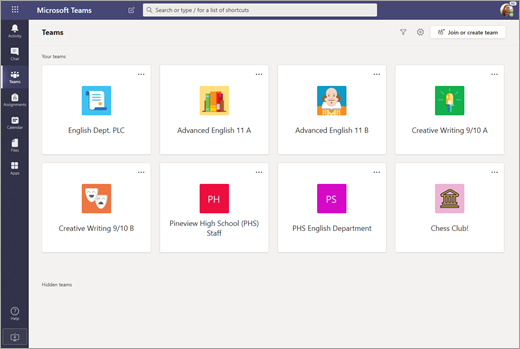
- Elevate day-to-day work when you Access Insights for the school and classroom, use apps and integrations to reduce workloads, and build community, all on a safe and secure platform.

There are just so many reasons to love teams whether you are an educator or a student.
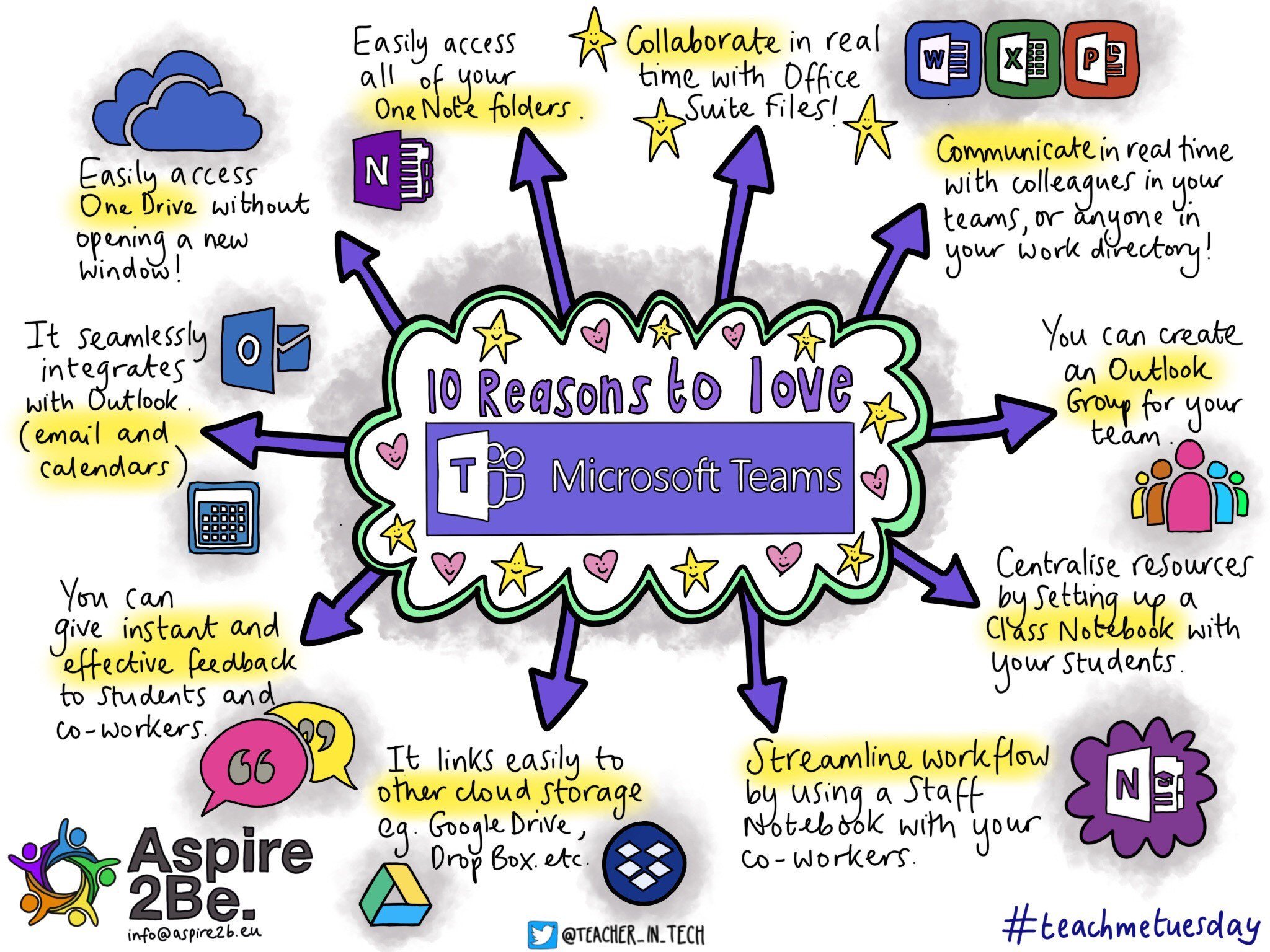
Microsoft even offers videos to help you navigate through Teams whether you are a beginner or just need a refresher.
Microsoft Teams offers a variety of applications that you can choose from. Find and explore which ones you would want to incorporate into your team page. With Microsoft Teams Applications for Education, educators are able to enrich their students’ learning experiences by integrating a variety of tools and resources inside their Class Team. Microsoft Teams Applications for Education offers a wide variety of applications ranging from assessment to video streaming.
If you aren’t excited yet about Microsoft Teams go check out the website. There are so many more amazing things that you can do with Teams than what I have even mentioned. Go and check it out for yourselves. It’s definitely worth looking into.
Thanks for Reading
Bayta Owens
The cultural and culinary experience of Netflix’s “The Cook of Castamar”
![[Image description: The Palacio del Infante don Luis, the filming location for the fictional Castmar estate on Netflix's "The Cook of Castamar".] Via Wikimedia Commons.](https://blogs.stockton.edu/webtools/files/2021/10/Palacio_del_Infante_don_Luis_Boadilla_del_Monte_01a.jpg)
The Cook of Castamar came to Netflix on July 24, 2021, but it had originally aired on Spain’s Atresmedia player early this year in February (as La Cocinera de Castamar). The show is set in 1720 Madrid and follows Clara Bellmonte, played by Spanish actress Michelle Jenner, after she starts working as a cook in the kitchen of Castamar, the estate of recently widowed Duke Diego Castamar. Clara has agoraphobia, making it impossible for her to go outside. The story centers around Clara and Diego’s love story, a relationship that is forbidden by the social expectations that prohibit aristocracy from marrying the help while still being accepted in polite society.
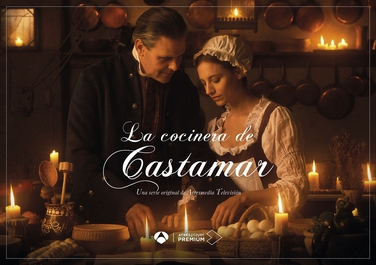
Diego’s estate is filled with toxic, manipulative people who want to use his wife’s recent death for their own gain. While Diego represents the highest crust of aristocracy, he is truly a kind, loving man who did not see how those around him were hurting him and his potential relationship with Clara (until the end, of course).
The culture of 18th-century European aristocracy is not exclusive to Spain, but it is still a society that is different from the one we live in now. However, Spain’s culture during this time was distinctive at this time, because it was immediately after Spain’s Golden Age. The food is what makes the cultural differences stand out, particularly with Spanish cuisine (the kind of food you wouldn’t see when watching another drama about European aristocracies, like The Tudors or Pride and Prejudice). We see Clara making chorizo with another maid, or serving sopapillas for breakfast.
Despite how foreign it seems for society to judge the relationship between a maid and her boss, social stigmas still exist in the 21st century that prevents many from giving in to their feelings (like Clara and Diego for the near entirety of the show). For example, there still seems to be a stigma surrounding couples with large age gaps, no matter the gender. As outdated as it sounds, there are even cases where interracial couples still face stigma. This is perhaps one of the main reasons why Clara and Diego’s story is so compelling; everyone loves a forbidden love story, especially because we all know what it’s like to yearn for something we can’t have.
Another major similarity the show has to my own culture is the value placed on the kitchen. The kitchen is the heart of the home, and this is something Diego recognizes even though it is where the servants mainly build their relationships (he constantly finds himself below in the kitchen to see Clara). When Clara first arrives at Castamar, the housekeeper, Mercedes Berenguer, is hostile toward her and narrows in on any rumor about Clara and Diego’s relationship. What drives her character is the social cue of needing to ensure that all of society knows that she runs a good household and keeps the servants in check (social stature is a major part of this world, economically and socially, while in the 21st-century people can rise up from how they were born). By the end, however, Mercedes and Clara grow to become friends (as she becomes friends with everyone in the kitchen), and all of this happens through the bonds that form over sharing a meal at a table. This is universal, no matter the time period, location, or culture.
The characters also do the same things for fun that we do today. That includes dancing and drinking, cooking for fun, and enjoying a meal together. The types of dances and food that they eat are the only things that are different from my own culture here in the States, but the characters’ values and actions are distinctly relatable because they are simply human.
The cultural differences, on the other hand, also come with the setting and filming locations are also distinctly Spanish. The exterior shots of Castamar were shot at the Palacio del Infante don Luis, a major national cultural site outside of Madrid. In the scenes that are filmed outdoors, especially during tense scenes with horses and sword fighting (without giving away too many spoilers), the landscape is ruggedly European. Jagged hills and rocks, dense forests of the north of Spain, and dry, open plains that are brown with winter (and look like they’d be sweltering in the summer) simply look different from the kinds of plains and forests you see in America.
Another main difference from the show’s society versus that of today’s is the use of public execution as corporal punishment. Clara’s father being executed through hanging is something that you would not see in modern society. In fact, the last public execution in America was in 1936, and in Spain, it was as recently as 1972. The point of this, however, is that they don’t happen in the 21st century.
A final thing that stands out as a cultural difference is politics. At the time, Felipe V ruled Spain and is also a character in the show. Felipe V was notoriously insane and takes away Diego’s dukedom for marrying Clara in the end. This involves the politics surrounding relationships that were not society-approved in 18th century Spain.
Today, politics do not play that big of a role in frowned-upon relationships. It’s mostly social consequences, and the lingering effects that have on a love affair are something that The Cook of Castamar gets right.
Microsoft Sway: Create, Design and Share your Story

What is Microsft Sway exactly?
Microsft says is a platform that allows you to create a Create dynamic visual presentations on a flexible storytelling platform. To me, the application feels like a combination of PowerPoint, Office, and Word put together in single page format. It allows a person or group to perform a presentation or blog-like panel on a floating platform. This allows users to scroll on the page as opposed to sliding or page format.
Teaching with sway
Sway is like a digital portfolio tool where students can “post” pages of their written and visual work on the web. Students can share their pages with peers or teachers in a virtual walkthrough of their work seamlessly. Teachers can take advantage of Sway’s easy design templates and simple creation platform, too.

“Come sway away”
Once you get the gist of it, creating visually stunning stories in Sway can be very beneficial. This could be useful to create content that is easy to share with users. My take on this is that Sway is a tool that a teacher can use to present different lessons. An important learning from this application is its flexibility it demonstrates unique integration of many different files and sharing methods. Also, it is very important that students themselves can also use this tool to Enrich their learning
“A short introduction video of Microsoft Sway”
Communication
This week’s reading of chapter 2 from Sail the 7 Cs with Microsoft Education I found multiple things that I haven’t realized was really a thing in forms of communication. But I will use to help further help my future in the education field. Such as communication is used to break down multiple issues that come about in a classrooms. It is one of the main resources that holds a classroom together. Teachers use communication to help better understanding when it comes down to learning. As well as using tools such as Immersive Reader which both students and teachers can benefit from. Microsoft translator helps break down some of the language barrier issues that may come about in teaching a lesson which is a great tool to have as a resource.
Thanks for reading 🙂
follow me on twitter @aaliyahmcruz
The World-Changing Translator
I am feeling very sick so fair warning this blog may seem lackluster, and if it does, I do apologize.

Growing up, there were plenty of fun questions we kids asked each other as part of our conversation, like “what superhero would you be?” or “would you rather fly or swim?”. They were fun to ask, as I could recall countless times envisioning myself flying through the sky or being Spider-Man. Microsoft took the question of “would you rather speak all languages or talk to animals?” and made it into a reality. Called “Microsoft Translator”, this program enables one to communicate with a person who speaks an entirely different language. As you can tell, it is a revolutionizing tool that is so practical and easy to use.
Microsoft Translator is so versatile, it can be used in a wide range of functions, including: one on one conversation, group conversation, and it can be used on a smartphone or desktop. As one person is speaking, the app can display the transcript of the speaker in whichever someone wants, and it also can use a voice feature that speaks the words of the speaker. In the classroom specifically, this feature’s duality is essential for those who may have trouble reading or hearing, for those who are disabled, and even those ESL or ELL students.
Being able to talk to someone from another language is so invaluable. With this app, we can connect with literally anyone in the world, which can help promote education for all and start to chip away at those SDGs from the UN. This app is leading the way on making the world a better place.
Recent Comments